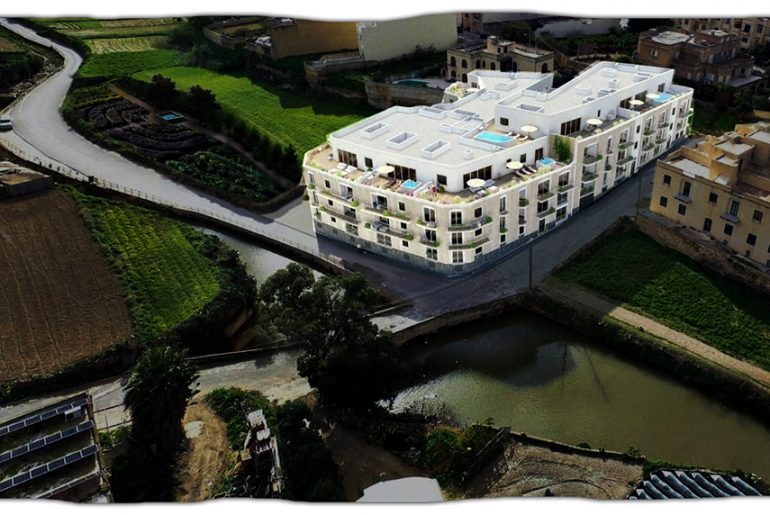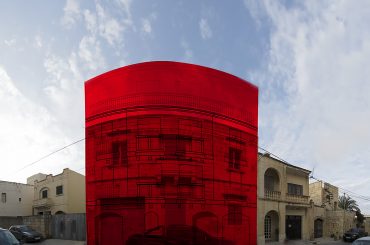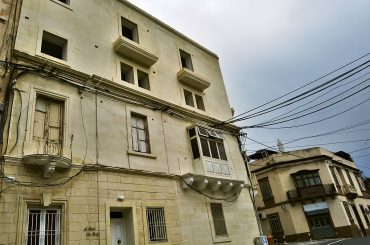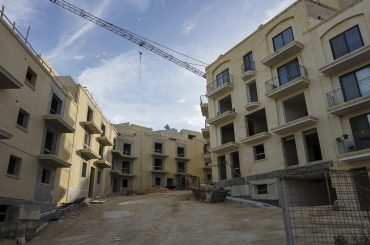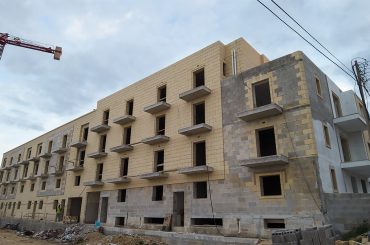The penthouses in the block of 54 flats on the side of the valley called Ta Zejta had been on sale for almost half a million euros in recent weeks, and buyers were promised that construction would be completed by “September 2023”. Yet the planning tribunal last Tuesday revoked the planning permit and sent the case back to the Planning Authority to process it afresh in line with the tribunal’s interpretation of building height policies.
The tribunal’s juxtaposition of policies of the Local Plan on edge-of-zone development and policies of DC15, which provide supplementary guidance to Local Plan, led it to an interpretation of height limitation that would see the height of the block reduced from five to three floors. It seems to be the first time that the tribunal made this particular interpretation. This comes in the heels of another rare decision the tribunal took last October: to suspend commencement of works until the appeal is decided.
Investigations by this website in recent weeks suggest that most flats in the development had been sold off-plan. One estate agent was telling interested buyers that only two flats remained unsold on the third floor.

Penthouses in shell form were being offered by estate agents for around half a million euros. The prices were for penthouses of around 250 square metres in size, including “huge terrace” with private swimming pool, as well as payment for the common parts.
The appeal against the planning permit granted last July was made by Mr Justice Grazio Mercieca, who lives in the area. The NGO Din L-Art Helwa later joined the appeal proceedings.
The two main points on which the decision hinged were the potential damage to the aquifer by the underground car park and structural support needed for the large block of flats – 54 flats and 36 garages – as well as height limitation policies for edge-of-zone development. The appellants presented a report on geomorphology or hydrology by a technical expert, and the tribunal, in its decision, referred this report to the Planning Authority to take it into consideration when processing the application afresh.

On the question of height limitation, the appellant argued that the relevant policy in the Local Plan on edge-of-zone developments in Gozo has to take precedence over heights in metres put into the policy document called DC15. The Local Plan limits the height to two floors and a three-course basement.
DC15, a supplementary guidance document published in 2015, redefined height limitation set by number of floors in the Local Plan to height limitations set in metres in DC15. And ever since, the Planning Authority has simply accepted development applications that could have a larger number of floors than specified in the Local Plan for as long as those floors were at least 2.6 metres in internal height and within the height limitation set in metres in DC15.
This has led to a wave of high, densely-stacked, unsightly blocks of flats throughout the islands over the past seven years. In Gozo, it has led to a wave of five-storey blocks of flats that have marred traditional Gozitan streetscapes and townscapes. Two years ago, a coalition of all Gozitan local councils met the environment minister and executive chairperson of the Planning Authority and called for suspension of height limitations as redefined in DC15. Their entreaties were ignored.
In last Tuesday’s decision in the Wied Ta Zejta case, the planning tribunal did not accept that there is a conflict between Local Plan policy and DC15 definitions of heights. In a lengthy exposition, the tribunal made an interpretation of Local Plan and DC15 policies fluidly, and arrived at a point of concurrence – the apex of the argument, so to speak – in which it said that policies for the area limit height of a potential building to two floors and a third floor receded by 4.25 metres.
The trajectory of the tribunal’s argumentation is not illogical. The tribunal argued that such analysis was in line with a judgement of the Court of Appeal that held that policies have to be employed holistically in analysing development applications.
The tribunal then built its argument by invoking a confluence of policies in the two policy documents in what is probably the first time that the tribunal has interpreted building height limitations in this manner.
The question is whether this will now be applied to other edge-of-zone development applications in Gozo, or whether such interpretation would be subject to other variations in other cases. There are currently various ongoing appeals against multi-storey blocks of flats situated on edge-of-zone sites in Gozo, and appellants can now take the opportunity to request that this this week’s judgement is taken into consideration in those cases.

Another point that becomes evident in this judgment are the overlap of policies. This is largely due to the policies introduced in 2015, particularly DC15, which was something of an add-on. The government wanted a quick fix and – most pointedly – it wanted to raise the permissible number of floors and permissible heights of new developments. This created overlaps of policies, and policies that indeed conflict with policies of the Local Plan, particularly on height limitation.
Yet the planning boards then took a clear way forward: when it comes to height limitation, they simply analysed proposals within the height limitations as redefined within DC15, largely ignoring the Local Plan policies on height limitation and also largely giving short thrift to the context-driven approach suggested in DC15 itself.
This has in turn led to ongoing attempts to attack the redefined heights in DC15, if only to halt the unsightly, serrated skylines that have been taking hold in the past 7 years. These attempts have culminated in an ongoing constitutional lawsuit in which three NGOs – Din L-Art Helwa (Gozo branch), Wirt Ghawdex, and Ghawdix – are requesting that the constitutional court “invalidates” the now-infamous “Annex 2” and related policy [the part that redefined heights from floors to heights in metres] of DC15.
Double jurisdiction
Last Tuesday’s judgement also raises another point. The tribunal sent the case back to the Planning Authority and put down clear instructions on how the authority has to decide when it comes to height limitation. This means that the tribunal has already made a judicial decision on the case, and that in turn raises questions on whether the same tribunal can hear any appeal that may ensue from the second decision yet to be taken by the authority.
Normally, in courts, any member of the judiciary that judges a case would have to recuse himself, or abstain, from hearing a second case arising from the same dispute. A different member of the judiciary would then take over the case.
The law that regulates the tribunal specifies that the tribunal would have to adhere to the same procedural legal provision that governs recusal or abstention in courts. Yet there is only one panel of the tribunal that handles judicial reviews of planning decisions. So would the prime minister have to appoint a new panel to hear any potential appeals in the same case, if anyone appeals after the second decision yet to be taken by the authority?
This goes to something that the Council of Europe’s constitutional experts, forming part of the Venice Commission, called the problem of the “double jurisdiction” in Malta, drawing attention to the large number of tribunals that fall short of constitutional standards. In various successive reports in rule of law in Malta, the Venice Commission offered to look into, and make recommendations, to tackle such “double jurisdiction”. But the government consistently ignored the Venice Commission in this regard.
Featured Image: Promotional imagery prepared by developer (Source: Facebook).
Donate to Planning Emergency
The investigative articles into perverse planning or damaging development published on this website take time, resources, and effort to put together. These articles make impact by the robustness of the research and the professionalism of the reportage. Your support is needed to sustain this kind of impactful reportage. This website's donation setup itself is uniquely transparent, with targeted amounts that allow tracking of donations in real time. Contribute as little as €5 to sustain active planning journalism that makes an impact.

